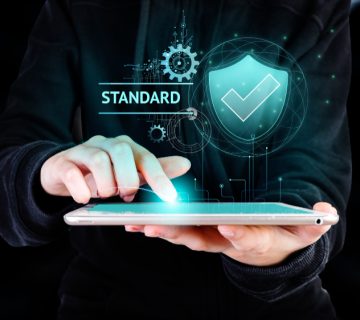Introduction
The attack surface keeps expanding—cloud-first operations, remote work, and AI-enabled tooling give defenders superpowers, but adversaries too. In 2025, resilience means anticipating high-impact threats, hardening identity, and practicing rapid recovery.
1) Ransomware 3.0: Double/Triple Extortion
Modern crews steal data before encryption, threaten leaks, and pressure partners/customers. “Living off the land” tactics and fileless malware make detection harder.
Mitigation
- Immutable, offsite backups (3-2-1), quarterly restore tests.
- EDR/XDR with behavioral rules; isolate fast, block lateral movement.
- Network segmentation; least privilege and just-in-time admin.
2) Business Email Compromise (BEC) & Advanced Phishing
AI-crafted emails/voice deepfakes mimic executives and vendors; QR-phish and MFA fatigue prompts are rising.
Mitigation
- MFA everywhere (resistant methods like FIDO2/passkeys); number matching.
- Secure email gateway + DMARC/DKIM/SPF; financial verification out-of-band.
- Continuous awareness training with realistic simulations.
3) Identity Attacks: Token Theft & Session Hijacking
Attackers bypass passwords by stealing session tokens, abusing OAuth consents, or exploiting weak conditional access.
Mitigation
- Device posture checks, conditional access, step-up auth for risky actions.
- Short-lived tokens, revoke on logout, monitor impossible travel/sign-in anomalies.
- Privileged Access Management (PAM) and admin workstation isolation.
4) Supply Chain & Third-Party Risk
Compromise of vendors, CI/CD pipelines, or open-source packages poisons downstream environments.
Mitigation
- SBOMs, signed builds, dependency pinning; verify provenance (SLSA).
- Vendor risk assessments; limit third-party scopes/keys; continuous monitoring.
- Separate dev/test/prod with strict secrets handling.
5) Cloud Misconfigurations & SaaS Exposure
Public buckets, permissive IAM roles, and overshared SaaS docs cause silent data leaks.
Mitigation
- CSPM/CNAPP for config baselines and drift; least-privilege IAM.
- Data classification + DLP across cloud, email, and endpoints.
- Shadow IT discovery; SaaS posture management (SSPM).
6) API Abuse & Web App Exploits
Unchecked APIs expose PII and business logic; bots scrape, brute-force, and execute fraud.
Mitigation
- API gateways with auth/rate limits; schema validation and input sanitization.
- WAF + bot management; shift-left testing (DAST/SAST/IAST) and bug bounties.
- Zero-trust access for private services.
7) AI-Powered Attacks & Deepfakes
Generative AI scales spear-phishing, fake artifacts, and social engineering; data poisoning targets AI workflows.
Mitigation
- Verification protocols for payments/HR; media authenticity checks.
- Guardrails for internal AI apps, prompt filtering, provenance of training data.
- User education on deepfake red flags.
8) Insider Threats (Malicious & Accidental)
Credential misuse, data exfiltration via personal apps, or misdirected shares remain common.
Mitigation
- Role-based access, UEBA to detect anomalies, and just-enough access.
- DLP with contextual controls; disable mass-download for sensitive data.
- Clear offboarding, periodic access reviews.
9) IoT/OT Vulnerabilities
Smart devices and operational tech often lack patching and segregation, inviting lateral movement.
Mitigation
- Asset inventory, network segmentation, and dedicated VLANs.
- Patch/firmware management; disable unused services.
- Monitor east-west traffic; strict inbound controls.
10) Mobile & Remote Work Risks
Unmanaged devices, malicious apps, and stolen laptops increase data exposure.
Mitigation
- MDM/UEM for device compliance, full-disk encryption, remote wipe.
- ZTNA over flat VPN; per-app tunneling and conditional access.
- Passwordless auth; phishing-resistant MFA.
Readiness Checklist for 2025
- Define RTO/RPO; maintain immutable, tested backups.
- Adopt least privilege, PAM, and continuous identity monitoring.
- Deploy EDR/XDR + SIEM with curated detections; rehearse incident runbooks.
- Continuously scan/patch; track SLAs by severity and exploitability.
- Harden cloud/SaaS posture; inventory all assets and APIs.
- Train people quarterly; simulate phishing and BEC scenarios.
Conclusion
Cyber risk in 2025 concentrates around identity, data, and software supply chains. Blend prevention, detection, and recovery—then practice. If you need a pragmatic, right-sized roadmap, IdeaDesk can assess your posture and implement controls that measurably reduce risk without slowing the business.



